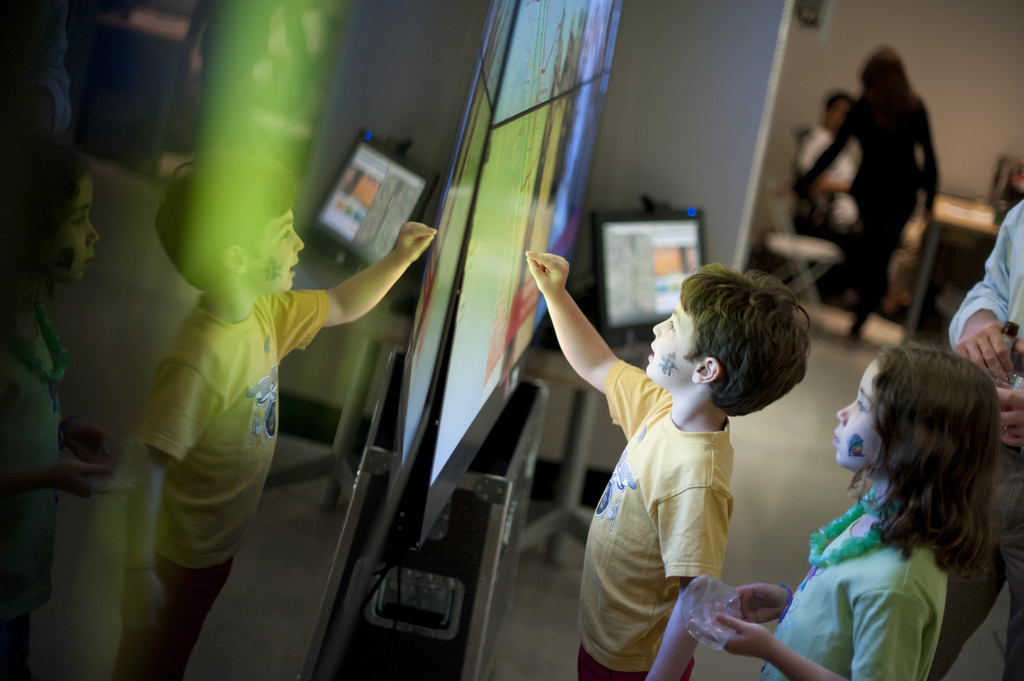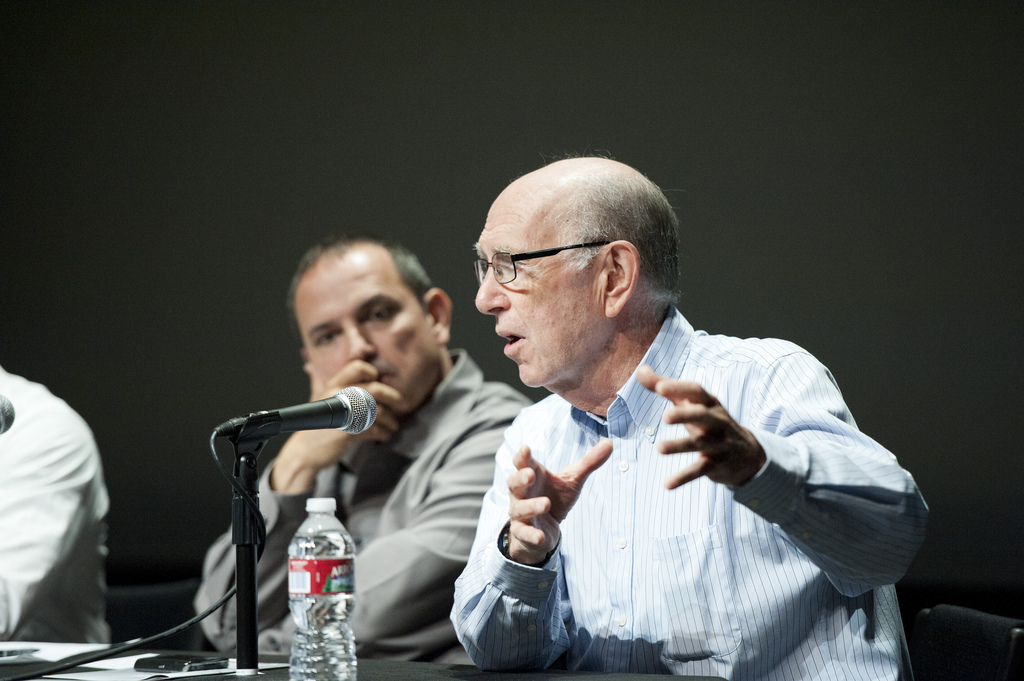Gallery@calit2 Exhibit Seeks to Redefine Role of Universities, Artists
By Tiffany Fox, (858) 246-0353, tfox@ucsd.edu
San Diego, Sept. 12, 2011 — A new exhibition at the gallery@calit2 seeks to rethink the way universities relate to the larger world and how they can build “corridors of knowledge” to close the gap between cultural institutions and the public.
|
The exhibition, titled Knowledge-Exchange Corridors, is on display at the University of California, San Diego division of the California Institute for Telecommunications and Information Technology (Calit2). It showcases the work of UC San Diego professors Teddy Cruz and Michael Cole, who are hoping to create what they call “new forms of urban pedagogy” by linking the specialized knowledge of the University with the ethical knowledge embedded in communities.
“This implies the redefinition of the borders that exist between cultural institutions, the universities and the communities that surround them,” says Cruz, who is UC San Diego's Professor in Public Culture and Urbanism in the Visual Arts Department. “What we mean by a ‘corridor of knowledge’ is exactly that: How to produce these exchanges between communities and universities; between the specialized knowledge of universities like UCSD and what I believe is the creative knowledge embedded in communities that continues to be untapped.
“This project really is enabling these corridors — hopefully through technology and through these interactions — to begin a series of programs that will bring, somehow, that kind of knowledge together.”
The exhibition features a series of student-produced maps, graphics, videos and other mixed media that illustrate the ongoing work of the Community Stations Initiative. The initiative is framed by two joint ventures with underserved communities of San Diego. The first is led by Professor Cole, who is UCSD’s University Professor of Communication and Psychology. A collaboration between UCSD’s Center for Community Well-Being and the San Diego Workforce Partnership’s South Metro Center, the venture focuses on issues pertaining to community health and service, K-12 education and job training in technology fields. It will eventually culminate in a series of collaborative courses held this fall at the Metro Center.
A second collaboration led by Professor Cruz pairs the UCSD Center of Urban Ecologies and Casa Familiar, a social service and cultural agency located in the border neighborhood of San Ysidro. This partnership focuses on community-based arts and public culture, affordable housing and inclusive urban development.
Linking the two communities together with UCSD are a trio of high-tech OptIPortables — mobile, high-resolution displays built by researchers at Calit2 from consumer LCD screens. The OptIPortables allow users to easily — and wirelessly — share digital content from remote locations. Calit2 Divisional Director Ramesh Rao worked with Cole and Cruz to install OptIPortables at Casa Familiar and the South Metro Center, and a third device is on display at the gallery@calit2.
|
Adds Cruz: “I many times say it is not only it is not only about the university coming to the rescue in giving something to the community. No, the community is already doing a lot that we can also bring into the university. Therefore we decided, let’s plug this technology into the spaces that these communities are already carving for themselves. They have infrastructures, they have spaces and they have resources.”
Aside from redefining the definitions of borders that exist between institutions and their surrounding communities, Cruz, Cole and their students are also interested, with this exhibition, in redefining the concept of art itself.
Cruz explains “There is embedded in the exhibition from the artistic point of view a very interesting notion about the redefinition about the role of the artist, or of art for that matter — in not only constructing art or artifacts or things, but in a sense constructing modalities of interface between things, between people and agencies."
As part of the exhibition, Cruz and Cole spent part of the summer leading students in a series of workshops to create maps, drawings and videos that further explored the ideas behind the exhibition will serve as the basis for Cruz and Cole’s courses in the Fall quarter.
Says Cole: “I think the idea is to simply say: You have the technology and you try to work around the problems as the technology comes and fills in to see whether or not you can create some kind of new social practice, some new social formation that people find useful. And it’s fun, too.”
“Knowledge-Exchange Corridors” is on exhibit in the gallery@calit2 through Sept. 23. The gallery is located on the first floor of UCSD’s Atkinson Hall and is open from 11 a.m. to 5 p.m., Monday through Friday. Admission is free and the gallery is open to the public.
Media Contacts
Tiffany Fox, (858) 246-0353, tfox@ucsd.edu
Related Links



